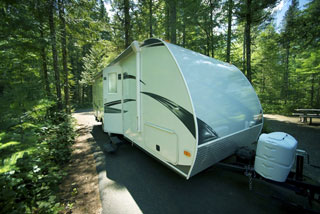Removing Antifreeze from Fresh Water System after Winterizing
When putting your Recreational Vehicle back into service after winterizing, it is important to flush the fresh water system of all the Anti freeze used to winterize and protect the fresh water system from freezing, Following a few steps will assure you of a clean fresh water system.
1. Drain the fresh water holding tank of any antifreeze that was added. During the winterizing process. Shut the fresh water tank low point drain valve.
2. Remove the drain plug from the water heater and allow it to drain. Re-install the plug. .
3. Put several gallons of fresh water into the fresh water holding tank. Open the low point fresh water tank drain and allow the water to drain completely. Close the low point drain valve..
4. Refill the fresh water tank with several gallons of fresh water..
5. Turn the fresh water pump on
6. Open all the cold water faucets one by one and allow the water to flow for several minutes.
7. Turn the fresh water pump off.
8. Connect the city water inlet to the fresh water hose and turn the city water supply on.
9. Open all the hot and cold water faucets and allow water to flow for several minutes. Flush the toilet a few times. If you have a washer machine, operate in in a warm cycle to allow anti freeze to be flushed out. Open the outdoor shower faucets if equipped.
10. If equipped with a water heater bypass, turn the valves back to the normal position. And open all the hot water faucets, one by one allowing the air to escape. Allow all hot water faucets to flow for a few minutes.
11. A great option at this time would be to perform the fresh water sanitation procedure outlined in the Fresh Water Sanitation article to have a clean fresh water system.
12. It would be recommended to shut the fresh water supply off and relieve the pressure bu opening a hot water spigot. Remove the hot water heater drain plug and allow it to drain again. Re-install the plug and refill the tank.
Your fresh water system is now ready for safe use.

